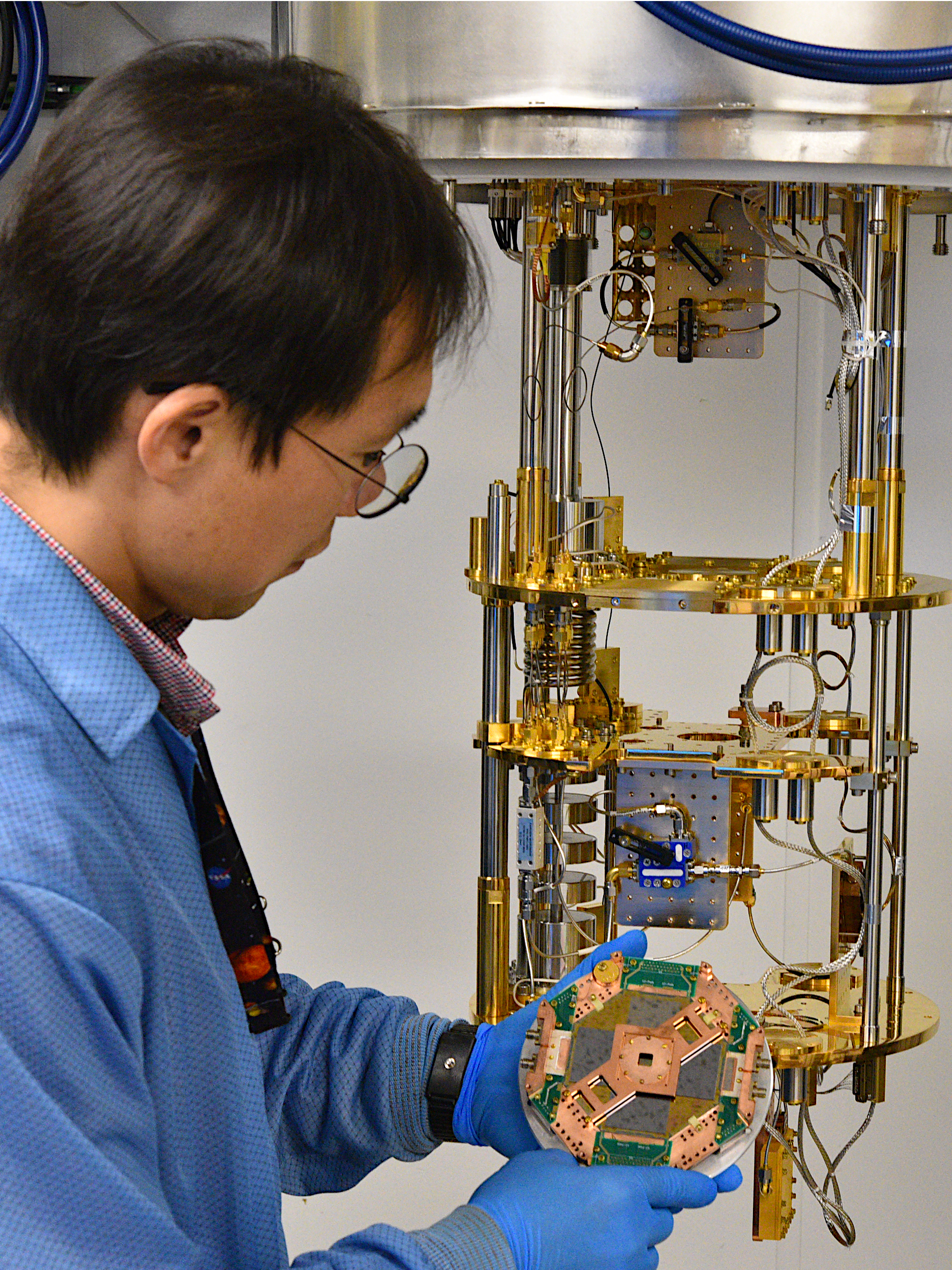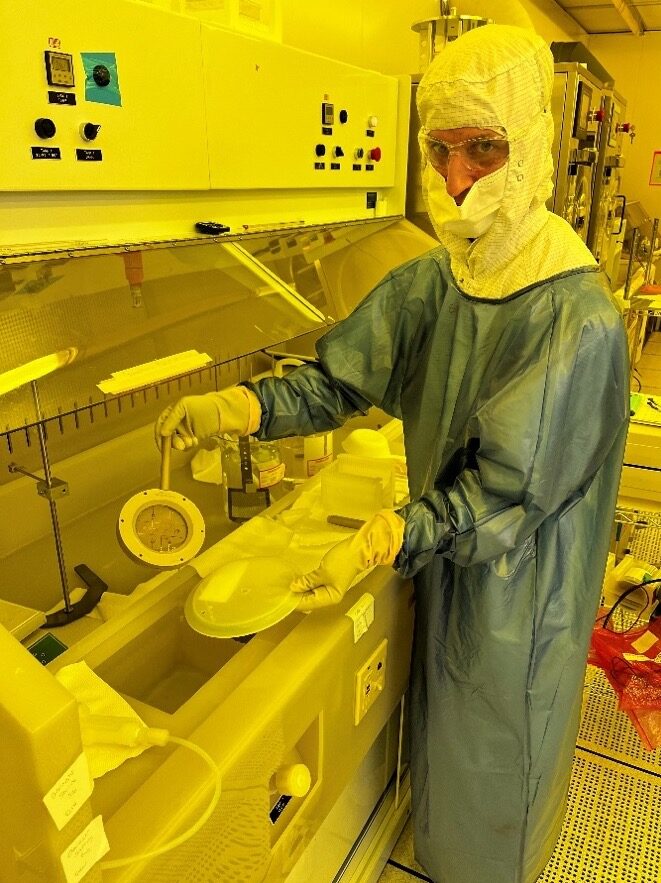Sub-Kelvin Detector Fabrication and Characterization Capability

Advancing NASA Missions: The Role of Ultracold Temperatures in High-Performance Detector Systems
Using temperatures below 1 K in detector systems opens access of NASA mission concepts to exquisite performance metrics and instrument designs. A vanishingly narrow superconducting wire can enable photon counting of emanations from faint astrophysical sources. Dense metals can be electroplated, micropatterned and integrated with an array of tiny thermometers to become a high-resolution imaging spectroscope of galactic extended x-ray emitters. Ultrafine superconducting wires can be shaped into miniature transmission lines and microwave antennae to create low power, compact readout arrangements for large arrays of these sensors approaching the ultimate quantum limits. Our labs at Goddard Space Flight Center maintain high standards of equipment performance to produce these integrated circuits and provide access to ultralow temperatures for materials characterization and assessment of performance.

Sub-Kelvin Detector Fabrication and Characterization Capability is managed by ETD’s Instrument System and Technology Division (ISTD). Contact ISTD for more information.
